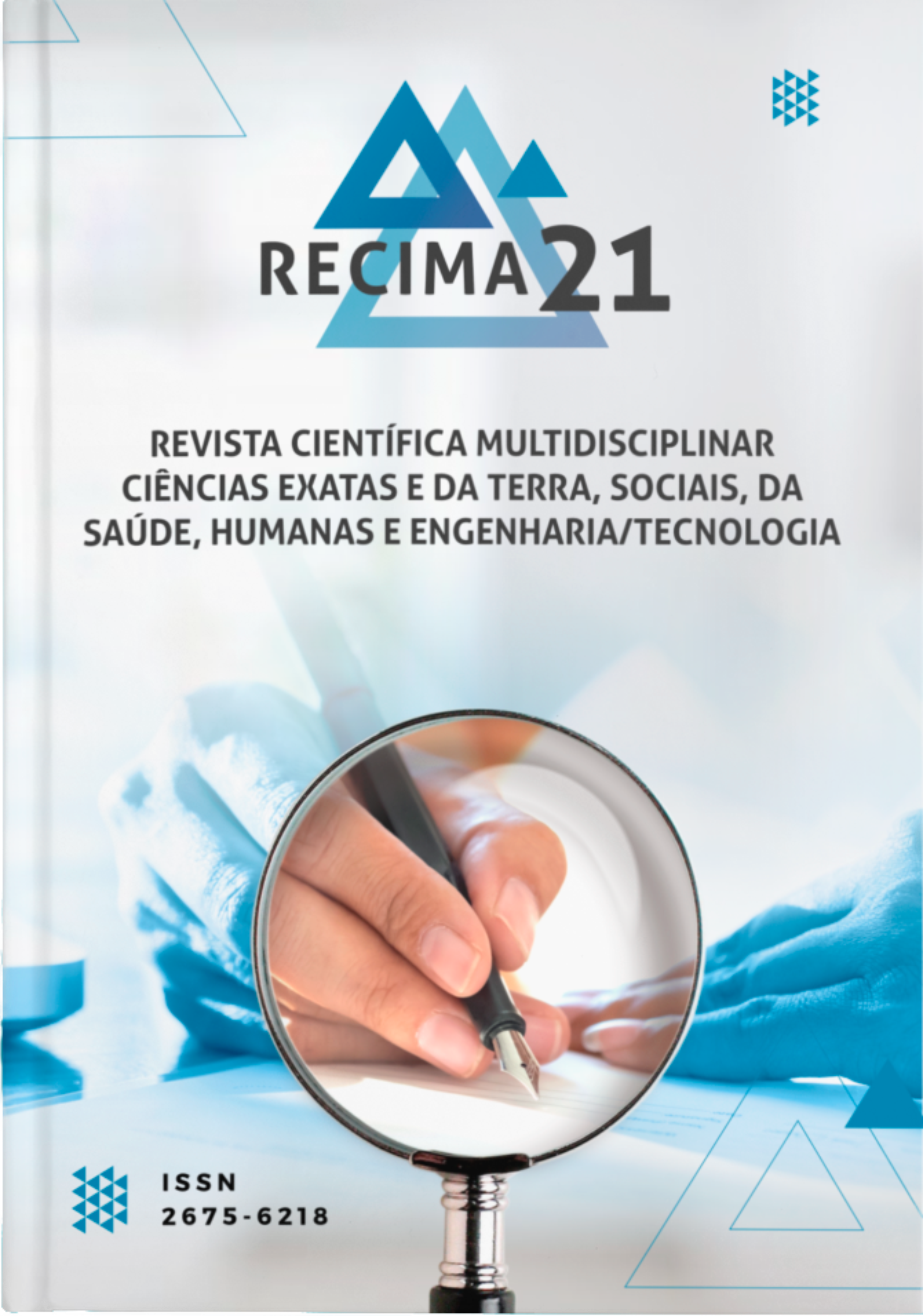IN-SY EVALUATION OF A BIOACTIVE MOLECULE OF ALOE VERA IN THE PREVENTION/TREATMENT OF MELASMA
DOI:
https://doi.org/10.47820/recima21.v2i8.627Keywords:
Aloe vera, Melasma is one of the skin disorders that have pathophysiologyAbstract
Melasma is one of the skin disorders that have pathophysiology associated with genetic or environmental predisposing factors. The current options for melasma interventions available often produce unwanted side effects and suboptimal results. And so, there is a demand for cosmetics, mainly of the natural base. Aloe vera is one of the most manipulated plants in skincare products worldwide, it is a succulent plant commonly used for biomedical, pharmaceutical, and cosmetic applications and is believed to act as na effective immunomodulator and assist both in prevention as a promising treatment for melasma. Therefore, this article aimed to demonstrate, through molecular docking, the interactions between a bioactive molecule present in Aloe vera and the main targets involved in melasma. The ligand studied was Acemanann, in which the structure was found in the PubChem base, and the main targets analyzed were the enzyme Tyrosinase and protein kinase C beta, whose structures were acquired at the Protein Data Bank. Docking was performed using the SwissDock program. The results showed spontaneity in the linker-target interactions and it was possible to identify several molecular links of importance between the bioactive molecule of Aloe vera and targets of interest presenting hydrogen bonds in various amino acid residues. Therefore, the prediction of the efficiency of Aloe vera in preventing/treating melasma at the molecular level is proven, since the interaction shown leads to the blocking of the proteins involved consequently, to the blocking of the melanogenesis process.
Downloads
References
ALI, S. A.; GALGUT, J. M.; CHOUDHARY, R. K. On the novel action of melanolysis by a leaf extract of Aloe vera and its active ingredient aloin, potent skin depigmenting agentes. Planta medica, v. 78, n. 8, p. 767-771, 2012.
BIEBER, A. K. et al. Pigmentation and Pregnancy: Knowing What Is Normal. Obstetrics and Gynecology, v. 129, n. 1, p. 168-173, 2017.
GHAFARZADEH, M.; EATEMADI, A. Clinical efficacy of liposome-encapsulated Aloe vera on melasma treatment during pregnancy. Journal of Cosmetic and Laser Therapy, v. 19, n. 3, p. 181-187, 2017.
GHAFFARI, S. et al. Docking Study on salicylaldehyde Derivatives as Anti-melanogenesis Agents. Journal of Fasa University Medical of Science, v. 8, n. 1, p. 618-627, 2018.
HAN, E.; CHANG, B.; KIM, D.; CHO, H.; KIM, S. Melanogenesis inhibitory effect of aerial part of Pueraria thunbergiana in vitro and in vivo. Archives of Dermatological Research, v. 307, n. 1, p. 57-72, 2015.
KUMAR, R.; SINGH, A. K.; GUPTA, A.; BISHAYEE, A.; PANDEY, A. K. Therapeutic potential of Aloe vera - A miracle gift of nature. Phytomedicine, v. 60, p. 152996, 2019.
LIU, C. et al. Extraction, Purification, Structural Characteristics, Biological Activities and Pharmacological Applications of Acemannan, a Polysaccharide from Aloe vera: A Review. Molecules, v. 24, n. 8, p. 1554, 2019.
MANN, T. et al. Inhibition of Human Tyrosinase Requires Molecular Motifs Distinctively Different from Mushroom Tyrosinase. Journal of Investigative Dermatology, v. 138, n. 7, p. 1601-1608, 2018.
MESA-ARANGO, A.C.; FLÓREZ-MUÑOZ, S.V.; SANCLEMENTE, G. Mechanisms of skin aging. IATREIA, v. 30, n.2, p. 160-170, 2017.
MIOT, L. D. B. et al. Fisiopatologia do Melasma. Anais Brasileiros de Dermatologia, v. 84, n. 6, p. 623-635, 2009.
NOMAKHOSI, M.; HEIDI, A. Natural options for management of melasma, a review. Journal of Cosmetic and Laser Therapy, v. 20, n. 7-8, p. 470-481, 2018.
OGBECHIE-GODEC, O. A.; ELBULUK, N. Melasma: an Up-to-Date Comprehensive Review. Dermatology and Therapy, v. 7, n. 3, p. 305-318, 2017.
PILLAIYAR, T.; NAMASIVAYAM, V.; MANICKAM, M.; JUNG, S. H. Inhibitors of Melanogenesis: An Updated Review. Journal of Medical Chemistry, v. 61, n. 17, p. 7395-7418, 2018.
PRETZLER, M.; BIJELIC, A.; ROMPEL, A. Expressão heteróloga e caracterização de tirosinase funcional de cogumelo (AbPPO4). Scientific Reports, v. 7, n. 1, p. 1810, 2017.
RAJANALA, S.; MAYMONE, B. C.; VASHI, N. A. Melasma pathogenesis: a review of the latest research, pathological findings, and investigational therapies. Dermatology Jornal Online, v. 25, n. 10, p. 13030, 2019.
RODRIGUES, D. et al. Mechanism of Aloe Vera extract protection against UVA: shelter of lysosomal membrane avoids photodamage. Photochemical & Photobiological Sciences, v. 15, n. 3, p. 334-350, 2016.
SIDDIQUI, I.A.; SANNA, A. Impact of nanotechnology on the delivery of natural products for cancer prevention and therapy. Molecular Nutrition Food Research, v. 60, n. 6, p. 1330-1341, 2016.
VIDEIRA, I. F. S.; MOURA, D. F. L.; MAGINA, S. Mecanismos reguladores da melanogênese. Anais Brasileiros de Dermatologia, v. 88, n. 1, p. 76-83, 2013.
YUAN, X. H.; JIN, Z. H. Paracrine regulation of melanogenesis. British Journal of Dermatology, v. 178, n. 3, p. 632-639, 2018.
Downloads
Published
How to Cite
Issue
Section
Categories
License
Copyright (c) 2021 RECIMA21 - Revista Científica Multidisciplinar - ISSN 2675-6218

This work is licensed under a Creative Commons Attribution 4.0 International License.
Os direitos autorais dos artigos/resenhas/TCCs publicados pertecem à revista RECIMA21, e seguem o padrão Creative Commons (CC BY 4.0), permitindo a cópia ou reprodução, desde que cite a fonte e respeite os direitos dos autores e contenham menção aos mesmos nos créditos. Toda e qualquer obra publicada na revista, seu conteúdo é de responsabilidade dos autores, cabendo a RECIMA21 apenas ser o veículo de divulgação, seguindo os padrões nacionais e internacionais de publicação.













